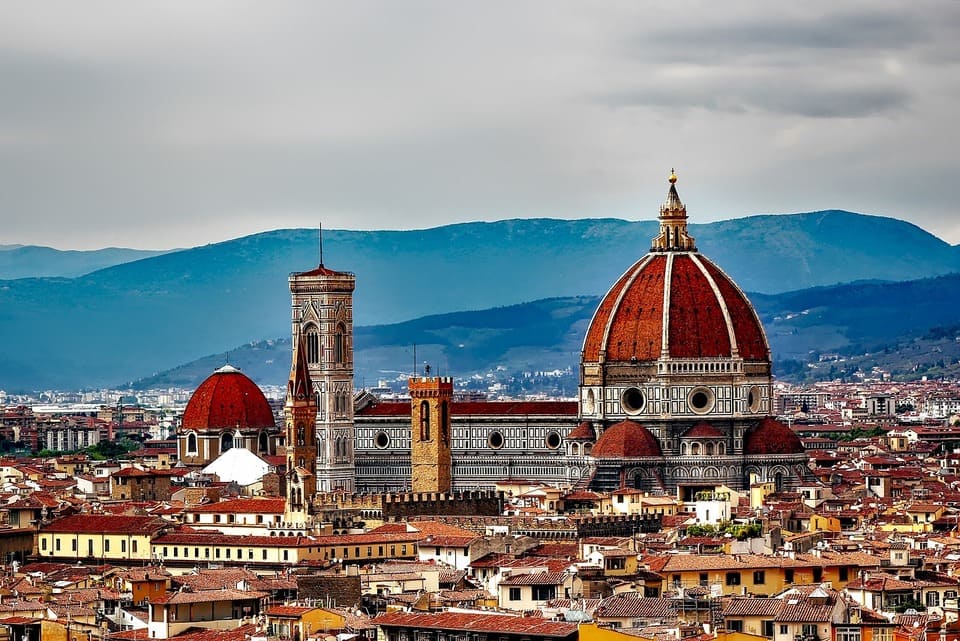
The Evolution of Standard Italian Language Through the Lens of the Tuscan Dialect
Language serves as both a mirror reflecting the diversity of a culture and a bridge connecting people across regions and generations. In the context of Italy, a country with a rich tapestry of regional dialects and historical influences, the concept of a standard Italian language holds immense significance. It goes beyond its identity as a linguistic construct, acting as a unifying force that promotes communication, cultural coherence, and a shared national identity.
Defining Standard Italian - A Common Denominator
Standard Italian, often referred to as "Italiano standard," is the linguistic variety that serves as a benchmark for communication and education across Italy. It is the version of the Italian language that is recognized and understood throughout the country, irrespective of regional dialects. While Italy is home to a plethora of dialects, each with its unique vocabulary, pronunciation, and grammatical peculiarities, standard Italian provides a common denominator that transcends these regional differences.
Tuscan Dialect- A Linguistic Keystone in the Formation of Standard Italian
In Italy's diverse linguistic panorama, one dialect stands out as closely related to the standard Italian —the Tuscan dialect. The historical significance, cultural prominence, and literary heritage of the Tuscan dialect have contributed to a deep connection with the standard Italian language recognized today.
The Tuscan dialect, spoken in the region of Tuscany and its capital, Florence, holds a special place in the hearts of linguists, scholars, and artists alike. It was during the Renaissance that the Tuscan dialect gained recognition for its unique qualities that set it apart from other regional dialects. As cultural and intellectual movements flourished, this dialect's prominence grew exponentially.
One of the greatest contributions to the Tuscan dialect's recognition came from the pen of Dante Alighieri, whose epic work "The Divine Comedy" was written in his native Tuscan. This seminal masterpiece showcased the poetic potential of the dialect, elevating it from a regional vernacular to a language of profound literary expression. The elegance, rhythm, and musicality of Tuscan set the stage for the emergence of what we now know as standard Italian.
Standardization and Influence - The Tuscan Dialect Model
The Tuscan dialect's journey from regional vernacular to a linguistic model was significantly influenced by the Tuscan writers and poets of the Renaissance. Figures such as Petrarch and Boccaccio embraced the dialect in their works, contributing to its cultural currency and broader acceptance. The Tuscan dialect's relative proximity to Latin, its phonetic consistency, and its rich vocabulary made it a prime candidate for standardization efforts.
The standardization process was further bolstered by the establishment of the Accademia della Crusca in Florence in 1582. This linguistic academy dedicated itself to preserving and refining the Italian language, with a strong emphasis on the Tuscan dialect's elegance and purity. The guidelines and dictionaries produced by the academy solidified the Tuscan dialect's influence on the evolving standard of Italian.
Shared Features and Linguistic Harmony of Standard Italian and Tuscan Dialect
The linguistic kinship between standard Italian and the Tuscan dialect can be observed in various linguistic features. Both share a similar phonetic consistency and grammatical structure, enhancing mutual intelligibility. While standard Italian incorporates elements from various regional dialects, it maintains a linguistic harmony with its Tuscan roots, giving it a sense of historical continuity.
Vocabulary is another area where the Tuscan dialect's influence is palpable. Many words and expressions from Tuscan have found their way into the standard Italian lexicon, enriching the language with layers of cultural significance. This symbiotic relationship between the two has helped maintain a sense of linguistic continuity while accommodating the evolving needs of modern communication.
A Living Legacy - Tuscan's Impact Today
Today, the Tuscan dialect's influence on standard Italian continues to be felt in various aspects of Italian culture and language. While standard Italian serves as the lingua franca of Italy, the legacy of the Tuscan dialect endures in literature, music, and expressions that echo through the ages. The Tuscan dialect stands as a testament to the power of regional diversity in shaping a national linguistic identity.
In essence, the Tuscan dialect's journey from a regional dialect to a foundational influence on standard Italian encapsulates the intricate dance between linguistic emergence and cultural expression. Its proximity to standard Italian is a testament to the enduring connection between a region's cultural heritage and the language it nurtures.
The Main Features of Standard Italian
Born out of historical evolution and refined by literary luminaries, standard Italian boasts distinctive features that make it a powerful tool of communication, artistic expression, and cultural preservation. Let's delve into the main features that define this remarkable language.
-
Phonetic Clarity of Italian
One of the key features of standard Italian is its consistent and clear phonetic pronunciation. Unlike the regional dialects that vary in sound across Italy, standard Italian adheres to a uniform set of phonetic rules. This phonetic clarity ensures that words are pronounced in a way that is understood by speakers from all corners of the country, fostering mutual intelligibility.
The vowels and consonants in standard Italian possess a melodic quality that contributes to its distinctive charm. Whether spoken in Rome or Venice, the phonetic unity of standard Italian transcends regional differences, making it a truly national language.
-
Italian Grammatical Structure
Standard Italian is characterized by a standardized grammatical structure that remains constant throughout the country. This uniformity in sentence construction, verb conjugation, and noun-adjective agreement allows for effective communication and comprehension. It eliminates the confusion that can arise from dialectal grammatical variations.
The grammatical coherence of standard Italian also plays a crucial role in education. It provides educators with a consistent framework for teaching and learners with a clear structure for language acquisition. This feature contributes to the language's role as a unifying force in education and intellectual exchange.
-
Italian Vocabulary Synthesis
A hallmark of standard Italian is its vocabulary synthesis, which draws from various regional dialects while maintaining a core lexicon that is widely recognized. This fusion of vocabulary results in a language that is both expressive and inclusive. While standard Italian embraces words from different linguistic traditions, it retains a balanced vocabulary that caters to diverse communication needs.
This curated vocabulary makes standard Italian an ideal medium for conveying complex concepts, engaging in discussions, and sharing ideas. It provides a linguistic canvas that accommodates a wide range of expressions, ensuring that speakers can communicate effectively across a multitude of contexts.
-
Cultural Neutrality – Standard Italian as An Identity Unifier
Standard Italian's cultural neutrality is a distinctive feature that sets it apart from regional dialects. While dialects carry the weight of cultural nuances and historical influences, standard Italian offers a neutral platform that transcends regional identities. This neutrality fosters cross-cultural understanding and allows for a shared sense of national identity.
In artistic and literary realms, standard Italian serves as an unbiased conduit for creative expression. It provides a common language for exploring the nation's collective heritage while celebrating the unique contributions of each region's cultural expressions.
-
A Symbol of National Unity of Italy
The main features of standard Italian converge to create a symbol of national unity. It bridges the linguistic gaps that naturally arise from Italy's diverse linguistic landscape. Standard Italian goes beyond being a mere means of communication; it is a cultural cornerstone that celebrates Italy's shared history, values, and aspirations.
The Societal and Cultural Impact of the Standard Italian Language
The significance of standard Italian transcends linguistic boundaries. It plays a vital role in unifying a nation that comprises diverse cultures, dialects, and histories. Through education, media, literature, and official communication, standard Italian bridges the gaps between regions, fostering a sense of shared identity and belonging.
Standard Italian is the language of education in Italy. It is used in schools, universities, and academic institutions across the country, ensuring that all citizens have access to the same educational resources and opportunities. This not only promotes literacy and learning but also enhances social mobility.
In the world of media and entertainment, standard Italian serves as the medium through which Italian culture is disseminated globally. It allows Italian literature, music, films, and television programs to reach international audiences without the barrier of regional linguistic nuances.
Preserving the Italian’s Heritage - Challenges and the Future
While standard Italian has undoubtedly played a significant role in shaping Italy's cultural and linguistic landscape, it is not immune to challenges in the modern world. The influence of digital communication, the prevalence of global English, and the persistence of regional dialects can sometimes exert pressure on the integrity of standard Italian.
Efforts to preserve standard Italian encompass language education, media responsibility, and language policies. Ensuring that younger generations have a strong command of the language is essential for maintaining its vitality. Media outlets play a role in upholding linguistic correctness while reflecting evolving communication trends. Language policies aim to strike a balance between honoring linguistic heritage and accommodating linguistic evolution.







